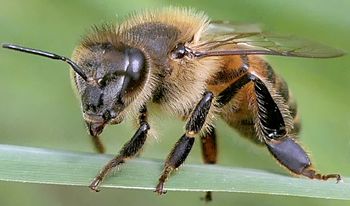
Apis mellifera (honey bee)
| The corbicula (pollen basket) is evident on the hind tibia of this worker. It consists of a shallow depression in the leg that is surrounded by stiff hairs which help hold the pollen glob in place. |

Lasioglossum sp. (sweat bee)

Aleiodes politiceps (braconid wasp)
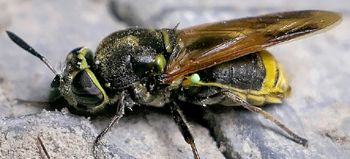
Hoplitimyia mutabilis (soldier fly)
| Many nectar-seeking flies resemble bees or wasps. They often have black and yellow coloration as well as behavior patterns that enhance the mimicry. This species has an additional feature: long antennae that are typical of hymenoptera but very uncommon on flies. |

Pseudiastata nebulosa & Oestrophasia signifera (vinegar fly & tachinid fly)
| These two small yellowish flies might look as if they are similar enough to be related. They are, however, in two families with very different habits. The vinegar fly larvae prey upon mealybugs while larvae of the tachinid are parasitoids that feed internally on beetles. |
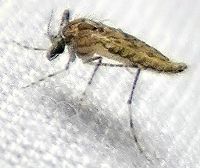
Chaoborus punctipennis (phantom midge)
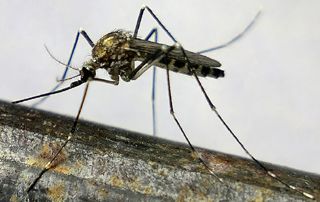
Ochlerotatus canadensis (mosquito)
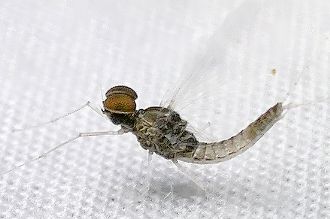
Baetis sp. (small minnow mayfly, male)
| The red dorsal compound eyes on this male mayfly are called turbinate, and contain ommatidia (individual facets) that are about twice as large as those in the smaller lateral eyes (which are pretty much the same as those of a female). It is thought that turbinate eyes are an advantage in detecting females, which the males approach from below, during flight swarms. |

Orthemis ferruginea (roseate skimmer, male)
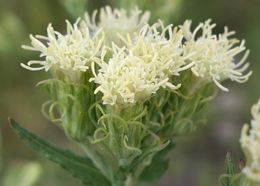
Brickellia eupatorioides (false boneset)
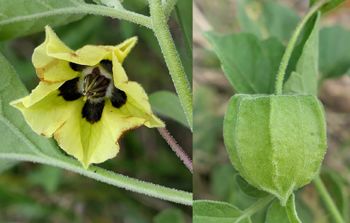
Physalis cinerascens (smallflower groundcherry)
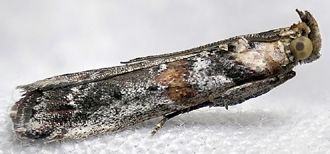
Adelphia petrella (moth)

Tampa dimediatella (Tampa moth)
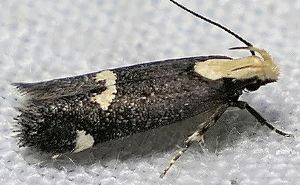
Chionodes phalacra (moth)
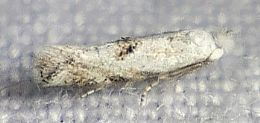
Bucculatrix sp. (ribbed cocoon-maker moth)

Cisthene tenuifascia (thin-banded lichen moth)

Caenurgina erechtea (forage looper moth)

Samea baccatalis (baccatalis moth)

Lamprosema victoriae (moth)
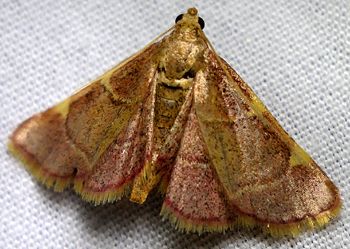
Hypsopygia olinalis (yellow-fringed dolichomia)
| Common names sometimes seem like random labels with no obvious relation to the subject. In this case, the Genus of this moth used to be Dolichomia but was subsequently changed, revealing one of the drawbacks of using a scientific taxon as a colloquial epithet. |
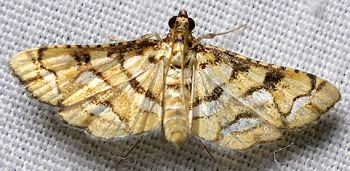
Hileithia magualis (moth)
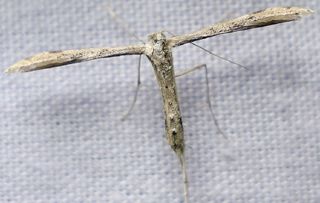
Adaina ambrosiae (ambrosia plume moth)

Lineodes integra & Lineodes interrupta
(eggplant leafroller moth & similar species)

Pyrausta laticlavia (southern purple mint moth)

Acronicta rubricoma (ruddy dagger)

Cobubatha dividua (moth)

Tarache aprica (exposed bird dropping moth)
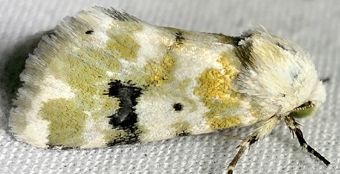
Schinia nundina (goldenrod flower moth)
| The caterpillars of this moth really do feed on goldenrod flowers, just as the common name suggests. They are superbly camouflaged. |
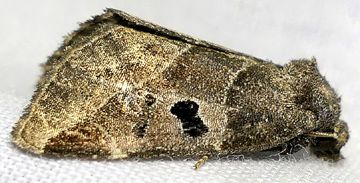
Plagiomimicus pityochromus (black-barred brown)

Sonia constrictana (constricted sonia moth)

Crocidosema plebejana (cotton tipworm moth)
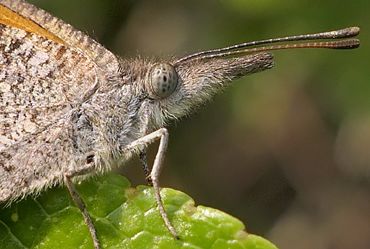
Libytheana carinenta (American snout)
| A unifying feature of butterflies in the family Nymphalidae is the way they perch on only four legs (the second and third pair). The first pair is held up against the head, visible just below the rear part of the eye in this image. As female Snouts have normal front legs and perch on all six, this individual is evidently a male. |
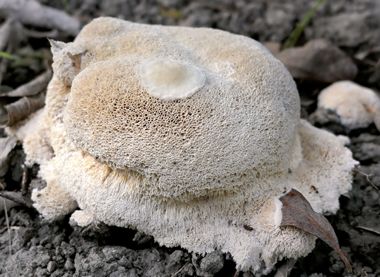
Oxyporus latemarginatus (frothy porecrust)
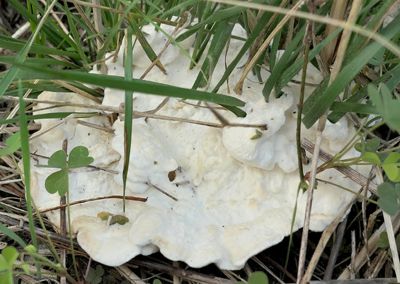
Amylosporus campbellii (fungus)
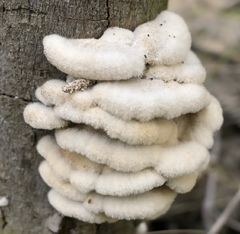
Schizophyllum commune (common split gill)
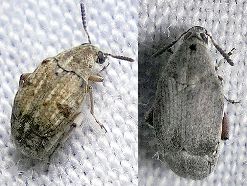
Algarobius bottimeri & Mimosestes amicus (bean weevils)
| These tiny beetles are a subfamily of Chrysomelidae (leaf beetles) whose larvae feed and pupate within seeds. Their elytra (wing covers) usually don't completely cover their rear end and the final abdominal segment, called a pygidium, has a thickened area that covers the exposed part, sort of like a butt shield. |
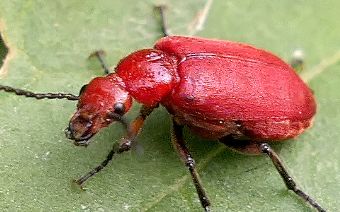
Rhyphonemognatha rufa (blister beetle)
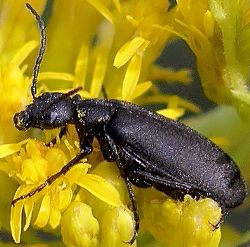
Epicauta pennsylvanica (black blister beetle)

Cyclotrachelus sp. (ground beetle)
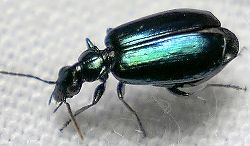
Lebia viridis (ground beetle)
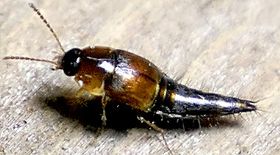
Tachyporus jocosus (rove beetle)

Planicephalus flavicosta & Graminella sonora (leafhoppers)
| Planthoppers, all of which feed on plant fluids, come in a dizzying array of types, divided into a number of different families. Leafhoppers (family Cicadellidae), as shown above, are perhaps most familiar; some others are shown below. |
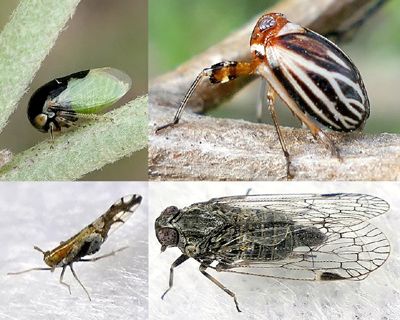
planthoppers representing four families
top left: membracidae, Micrutalis parva (treehopper)
top right: dictyopharidae, Phylloscelis atra (black leafleg)
bottom left: delphacidae, Liburniella ornata
bottom right: cixiidae Melanoliarus sp. |

Thyanta custator (stink bugs)
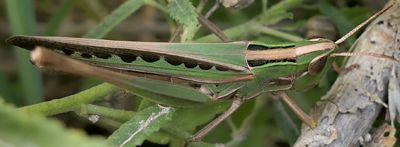
Syrbula admirabilis (handsome grasshopper, female)
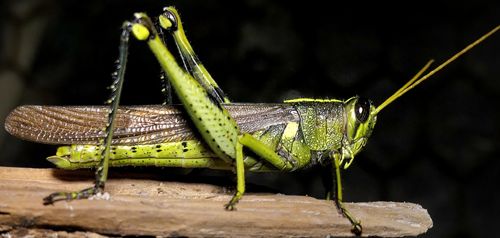
Schistocerca obscura (obscure bird grasshopper, male)
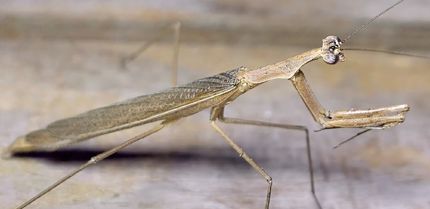
Oligonicella scudderi (Scudder's mantis, male)
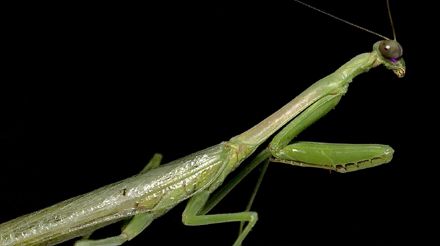
Stagmomantis carolina (Carolina mantis, male)
| Females of the two mantis species shown above are flightless, but males frequently fly to lights where they hunt other insects lured in. Though they are both recognizable as mantids, these two individuals belong in different families. |

Dioprosopa clavata (flower fly larva eating aphid)
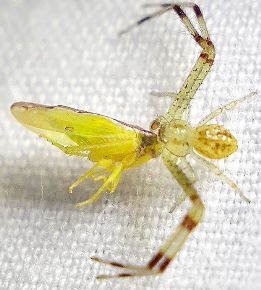
Mecaphesa sp. (crab spider eating leafhopper)

![]()